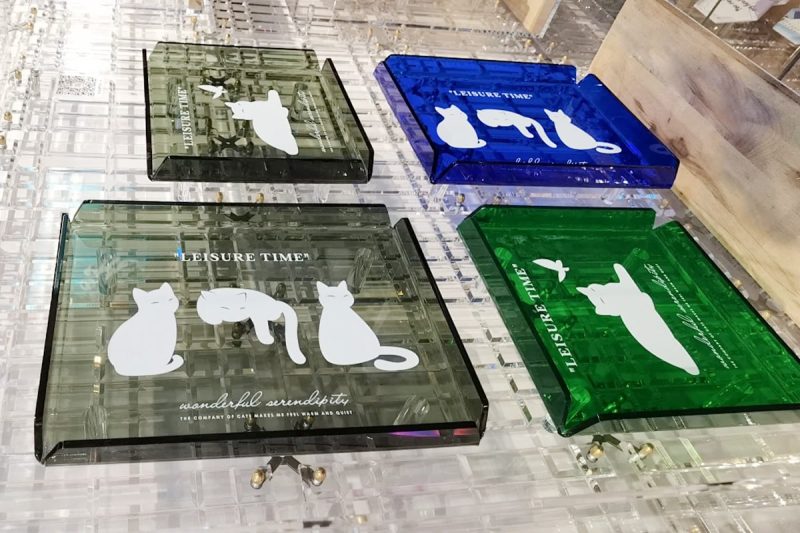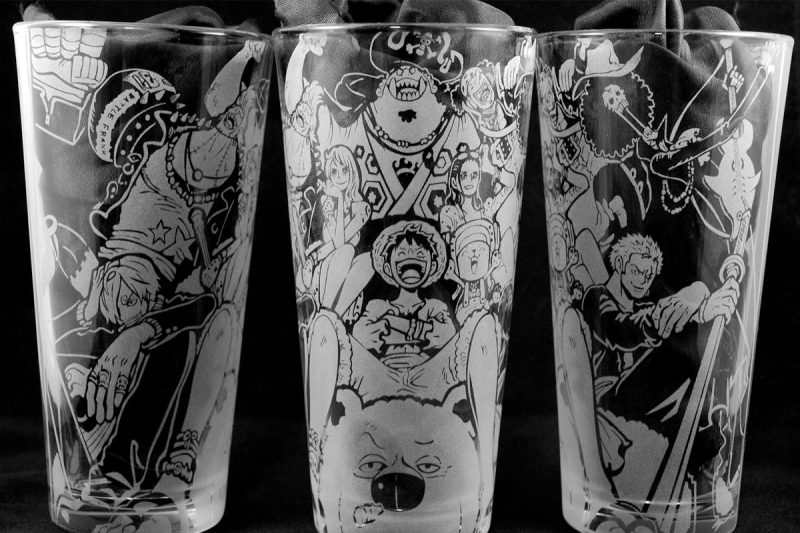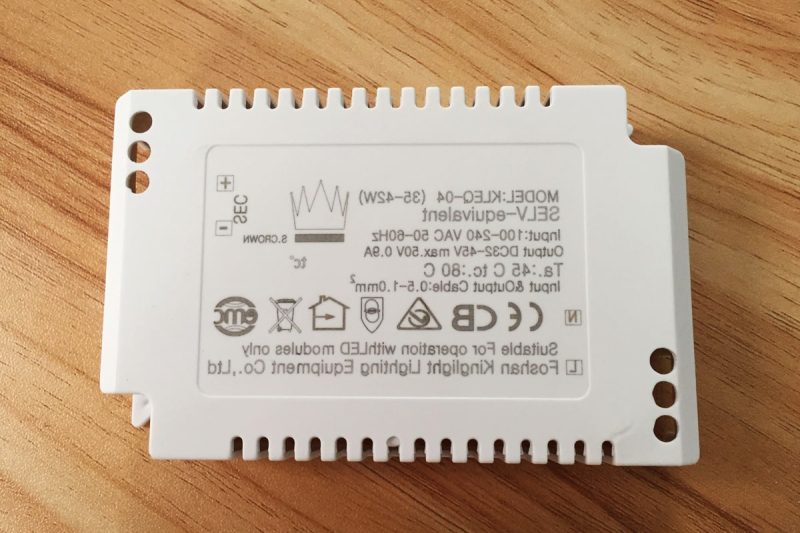
Jaké faktory ovlivňují kvalitu laserového značení?
Laserové značení je vysoce přesná technologie zpracování široce používaná v mnoha průmyslových odvětvích, jako je elektronika, lékařství a automobily. Působením laserových paprsků na povrch materiálů vytváří trvalé značky. Ve srovnání s tradičními metodami značení má laserové značení výhody v tom, že je bezkontaktní, bez znečištění, rychlé a vysoké přesnosti.
Kvalita značení však nezávisí pouze na samotném laserovém zařízení, ale ovlivňuje ji také mnoho faktorů. Za prvé, různé typy laserových zdrojů (jako je vláknový laser, CO2 laser a UV laser) mají různou adaptabilitu na různé materiály. Například vláknový laser je vhodnější pro kovové materiály, zatímco CO2 laser je vhodnější pro nekovové materiály. UV laser je vhodný pro materiály citlivé na teplo díky svým vlastnostem studeného světla. Za druhé, vlastnosti materiálu, jako je absorpce, odrazivost, tepelná vodivost atd., ovlivní účinek laserového značení. Rozdílná drsnost povrchu a povlaky také ovlivní jasnost značení. Kromě toho jsou důležitými faktory při určování kvality značení také nastavení parametrů laseru (jako je výkon, rychlost značení atd.), podmínky prostředí a úroveň zkušeností obsluhy. Pouze komplexním zvážením těchto faktorů lze zajistit nejlepší efekt laserového značení.
Obsah

Typ a zdroj laseru
Typ a zdroj laseru jsou jedním z důležitých faktorů ovlivňujících kvalitu laserového značení. Různé typy laserů mají různé vlastnosti, pokud jde o přizpůsobivost materiálu a efekty značení. Výběr vhodného typu laseru může výrazně zlepšit účinnost a kvalitu značení. Mezi běžné typy laserů patří především následující:
- Vláknový laser: Díky vysoké hustotě energie a vynikajícím zaostřovacím vlastnostem jsou vláknové laserové generátory velmi vhodné pro značení kovových materiálů, zejména materiálů jako je ocel, hliník a měď. Vláknové laserové značení může dosáhnout extrémně vysoké přesnosti a často se používá ve vysoce přesných aplikacích, které vyžadují extrémně jemné vzory a text, jako je označování elektronických součástek, lékařských zařízení a automobilových dílů. Vláknové lasery mají navíc nízkou spotřebu energie a dlouhou životnost, což z nich dělá první volbu pro značení kovů.
- CO2 laser: CO2 lasery se používají hlavně pro značení nekovových materiálů, zejména materiálů jako je dřevo, plast, kůže a papír. S vlnovou délkou 10,6 mikronů dokáže účinně absorbovat energii nekovových materiálů, takže je široce používán v odvětvích, jako je balení, oděvy a ruční práce. Funkce řezání a rytí CO2 laserové značení vyniká také v reklamní produkci, dekoraci nábytku a výrobě modelů.
- Ultrafialový (UV) laser: UV lasery se nazývají zdroje studeného světla kvůli jejich krátké vlnové délce (obvykle 355 nm). Ve srovnání s jinými typy laserů mají UV lasery velmi malou tepelně ovlivněnou zónu, což znamená, že tepelná deformace a poškození materiálu se během procesu značení výrazně sníží. Díky tomu je velmi vhodný pro jemné značení, zejména na materiály citlivé na teplo, jako je sklo, plasty a keramika. UV laserové značení se často používá ve vysoce přesných průmyslových odvětvích, jako jsou elektronické výrobky, kosmetické obaly a farmaceutické etikety, a může dosáhnout extrémně jemných a jasných efektů značení.
Stručně řečeno, výběr správného typu laseru a zdroje může pomoci zajistit konzistentní a přesnou kvalitu značení na základě specifických požadavků na materiál a aplikaci.

Vliv vlastností materiálu
Vlastnosti materiálu jsou jedním z klíčových faktorů ovlivňujících účinek laserového značení. Fyzikální a chemické vlastnosti materiálu určují, jak reaguje na laser, včetně absorpce, rozptylu a odrazu laseru. Následuje několik hlavních vlastností materiálů a jejich specifických vlivů na kvalitu laserového značení:
- Absorpce a odrazivost: Materiály mají různé absorpční a odrazové schopnosti pro lasery různých vlnových délek. Materiály s vysokou absorpcí mohou lépe absorbovat laserovou energii a vytvářet lepší efekty značení, zatímco materiály s vysokou odrazivostí odrážejí velké množství laserového světla a snižují účinnost značení. Například kovové materiály jako hliník a měď mají vysokou odrazivost pro vláknové lasery, což může mít za následek nedostatečné nebo nejasné značení. Z tohoto důvodu je při značení těchto vysoce reflexních materiálů obvykle nutné upravit parametry laseru nebo použít lasery specifických vlnových délek pro zvýšení míry absorpce pro dosažení ideálního efektu značení. Naproti tomu nekovové materiály, jako jsou plasty nebo sklo, mají vysokou míru absorpce CO2 a UV laserů a hloubku a kontrast značení lze snadněji ovládat.
- Tepelná vodivost: Tepelná vodivost materiálu přímo ovlivňuje rozložení tepla během procesu značení. Materiály s vysokou tepelnou vodivostí, jako je měď, hliník a další kovy, mohou rychle rozptýlit teplo generované během procesu značení, snížit místní přehřívání a zabránit roztavení nebo spálení povrchu materiálu. Takové materiály obvykle vyžadují zvýšený výkon laseru nebo prodlouženou dobu značení během laserového značení, aby bylo zajištěno, že na oblast značení bude aplikována dostatečná energie. U materiálů s nízkou tepelnou vodivostí, jako je plast nebo dřevo, je obtížné rychle pronikat teplo a během procesu značení pravděpodobně dojde k přehřátí, což má za následek deformaci nebo poškození. Proto je při zpracování takových materiálů obvykle nutné snížit výkon laseru nebo zvýšit opatření chlazení, aby nedošlo k přehřátí.
- Stav povrchu: Stav povrchu materiálu může mít také důležitý vliv na efekt značení. Hladký a čistý povrch zajišťuje, že laser působí rovnoměrně a vytváří jasný a konzistentní vzor značení. Hrubý nebo potažený povrch však může způsobit nerovnoměrné rozložení laserové energie, což má za následek nejasné značení nebo nedostatečný kontrast. Tloušťka a jednotnost povlaku jsou zvláště důležité. Pokud je povlak nerovnoměrný, může laser vytvářet různé efekty v různých oblastech, což má za následek nekonzistentní značení. Správná příprava povrchu před značením, jako je čištění, broušení nebo nátěr, může výrazně zlepšit účinek značení.
Stručně řečeno, míra absorpce materiálu, odrazivost, tepelná vodivost a stav povrchu mají přímý vliv na hloubku, jasnost a kontrast laserového značení. Pochopení a správné nastavení těchto vlastností materiálu může pomoci optimalizovat proces laserového značení a zajistit, že výsledná kvalita značení dosáhne očekávaného efektu.

Vliv parametrů laseru
Nastavení parametrů laseru je rozhodující pro kvalitu laserového značení. Správné nastavení parametrů laseru může zajistit nejlepší efekt značení. Tyto parametry určují nejen rychlost a efektivitu procesu značení, ale také přímo ovlivňují jasnost, hloubku a kontrast značení. Následuje několik klíčových parametrů laseru a jejich role při značení:
- Nastavení výkonu: Výkon laseru je důležitým faktorem ovlivňujícím hloubku a účinek značení. Při příliš vysokém nastavení výkonu je energie laseru příliš velká, což může snadno způsobit nadměrnou ablaci, roztavení nebo deformaci povrchu materiálu, zejména u materiálů citlivých na teplo, jako jsou plasty nebo tenké kovy. Nadměrná síla může také způsobit drsné a nerovné okraje značení, což ovlivňuje celkový vzhled. Při příliš nízkém výkonu je laserová energie nedostatečná a nemůže účinně působit na povrch materiálu, což má za následek nejasné nebo dokonce obtížně identifikovatelné značení. Proto je potřeba nastavení výkonu přesně upravit podle vlastností materiálu a specifických požadavků na značení, aby bylo zajištěno, že lze dosáhnout dostatečné hloubky značení bez poškození povrchu materiálu.
- Pulzní frekvence: Pulzní frekvence se vztahuje k počtu pulzů emitovaných laserovým generátorem za sekundu, což má významný vliv na rychlost a kvalitu povrchu značení. Vyšší frekvence pulzů znamená, že energie laseru je rovnoměrněji distribuována, což pomáhá vytvářet hladší povrch značení a je vhodné pro aplikace vyžadující jemné značení. Příliš vysoká frekvence však může také způsobit přílišné rozptýlení laserové energie, což ovlivňuje hloubku a kontrast značení. Nižší frekvence pulzů způsobí, že energie laseru bude koncentrovanější, což je vhodné pro scény, které vyžadují větší hloubku značení, ale mohou způsobit mírnou drsnost povrchu. V závislosti na různých materiálech a požadavcích na značení tedy může výběr správné pulzní frekvence dosáhnout rovnováhy mezi hloubkou a povrchovou úpravou.
- Rychlost značení: Rychlost značení se vztahuje k rychlosti, kterou se laser pohybuje po povrchu materiálu, což má přímý vliv na hloubku, účinnost a účinek značení. Vyšší rychlosti značení mohou zlepšit efektivitu výroby a jsou vhodné pro potřeby zpracování ve velkém měřítku. Se zvyšující se rychlostí však laser zůstává na materiálu kratší dobu a hloubka značení se také snižuje, což může ovlivnit jasnost a kontrast značení. U aplikací, které vyžadují hluboké značení nebo vyšší přesnost, je obvykle nutné snížit rychlost značení, aby měl laser dostatek času na účinnou interakci s materiálem. Nastavení rychlosti musí komplexně zohledňovat požadavky na značení a vlastnosti materiálu, aby bylo dosaženo rovnováhy mezi účinností a kvalitou.
- Nastavení ohniskové vzdálenosti: Přesnost laserové ohniskové vzdálenosti je rozhodující pro kvalitu značení. Ohnisková vzdálenost se týká vzdálenosti mezi laserovým paprskem a povrchem materiálu. Laserová energie v optimální ohniskové vzdálenosti je koncentrována, což může vytvářet jasné a přesné efekty značení na povrchu materiálu. Pokud není ohnisková vzdálenost správně nastavena, energie laserového paprsku se rozptýlí, což má za následek rozmazané a neostré značení a není možné dosáhnout jasných vzorů nebo textu. Zejména u jemného značení bude mít i nepatrná odchylka ohniskové vzdálenosti výrazný vliv na výsledný efekt. Pravidelná kalibrace zaostření zařízení a potvrzování přesnosti ohniskové vzdálenosti před značením jsou klíčovými kroky k zajištění konzistence efektu značení.
Obecně platí, že správné nastavení parametrů laseru je klíčové pro získání vysoce kvalitních výsledků laserového značení. Správným nastavením výkonu, frekvence pulsů, rychlosti značení a ohniskové vzdálenosti lze účinně zlepšit jasnost, hloubku a kontrast značení, což zajistí, že laserové značení bude fungovat nejlépe v různých materiálech a aplikacích.

Vliv podmínek prostředí
V procesu laserového značení hrají zásadní roli podmínky prostředí, protože výkon laserového označovacího stroje je velmi citlivý na teplotu, vlhkost a čistotu vnějšího prostředí. Vhodné podmínky prostředí pomáhají zajistit stabilitu zařízení a kvalitu efektu značení, zatímco nepříznivé faktory prostředí mohou vést k problémům, jako je nestabilní značení a snížená přesnost. Níže jsou uvedeny hlavní podmínky prostředí, které ovlivňují kvalitu laserového značení:
- Teplota: Okolní teplota má přímý vliv na provozní stav laserového značkovacího stroje. Nadměrná teplota může způsobit přehřátí uvnitř zařízení, zejména laserového zdroje a elektronických součástí. Přehřátí sníží pracovní účinnost zařízení a dokonce způsobí poruchu nebo poškození. Kromě toho se výstupní výkon laserového generátoru může stát nestabilním v prostředí s vysokou teplotou, což má za následek kolísání intenzity laserového paprsku během procesu značení a ovlivňuje konzistenci a jasnost značení. Naopak příliš nízká teplota může také ovlivnit spouštění a normální provoz zařízení, zejména v chladných oblastech nebo ročních obdobích, kde se může laserový generátor zahřívat déle. Udržování okolní teploty zařízení v rozmezí doporučeném výrobcem (obvykle 15 °C až 30 °C) je proto klíčem k zajištění stabilního provozu laserového značkovacího stroje.
- Vlhkost: Nadměrná vlhkost je dalším hlavním skrytým nebezpečím, které ovlivňuje výkon zařízení pro laserové značení. Prostředí s vysokou vlhkostí může způsobit vlhkost optických součástí laserového značícího stroje, jako jsou čočky, čočky a další klíčové součásti. Pokud jsou tyto optické součásti vlhké, laserový paprsek se během přenosu rozptyluje a zeslabuje, což má za následek nejasné nebo rozmazané efekty značení. Kromě toho může vysoká vlhkost urychlit oxidaci a korozi uvnitř zařízení a zkrátit životnost zařízení. Aby se předešlo problémům s vlhkostí, označovací zařízení by mělo být instalováno v prostředí s dobrou regulací vlhkosti, zejména v období dešťů nebo ve vlhkých oblastech. Doporučuje se používat zařízení, jako jsou odvlhčovače, aby se okolní vlhkost udržela v rozmezí 40%-60%, aby se zabránilo navlhnutí optických součástí a zařízení.
- Čistota: Čistota pracovního prostředí má významný vliv na přesnost a kvalitu laserového značení. Částice, jako je prach, špína a olejové skvrny, se mohou usazovat na povrchu značícího materiálu nebo optických součástí zařízení, což narušuje přenos laserového paprsku a přesnost ohniskové vzdálenosti, čímž se snižuje jasnost a kontrast označení. Ve výrobním prostředí, zejména v průmyslovém areálu, je ve vzduchu mnoho prachových částic, které mohou ovlivnit interakci mezi laserovým paprskem a povrchem materiálu, což má za následek nerovnoměrné značení. Pro zajištění nejlepšího efektu značení se doporučuje zařízení pravidelně čistit, zejména čočku a optické součásti, aby byl povrch označovacího materiálu čistý a bez prachu. Během procesu čištění používejte vhodné čisticí nástroje a metody, aby nedošlo k poškrábání optických součástí nebo poškození povrchu materiálu.
Stručně řečeno, správná kontrola teploty, vlhkosti a čistoty v prostředí je zásadní pro výkon a kvalitu značení laserového značkovacího stroje. Udržováním provozu zařízení ve vhodných podmínkách prostředí lze nejen zlepšit přesnost a stabilitu značení, ale také prodloužit životnost zařízení a zajistit konzistenci a spolehlivost výrobního procesu.

Vliv optických komponent
Optické komponenty hrají v laserových značkovacích strojích zásadní roli. Přímo ovlivňují účinnost přenosu laserového paprsku a kvalitu značení. Vysoce kvalitní optické komponenty dokážou zajistit, že laserový paprsek působí na povrch materiálu s maximální přesností a účinností, čímž se dosáhne jasných a jemných efektů značení. Níže je uvedeno několik klíčových aspektů vlivu optických komponent na kvalitu laserového značení:
- Kvalita čočky: Čočka je jednou z nejdůležitějších optických součástí laserového systému. Jeho funkcí je zaostřit laserový paprsek a přesně jej promítnout na povrch materiálu. Pokud je kvalita čočky špatná, například škrábance, prach nebo nedostatečný optický výkon na povrchu čočky, laserový paprsek se během procesu ostření odchýlí nebo ztratí energii, což ovlivní přesnost a jasnost značení. Špatná kvalita čoček může způsobit rozmazané značení, neostré nebo nerovnoměrné rozložení energie, zejména v případech, kdy je vyžadováno jemné zpracování, bude efekt značení vypadat drsně a nerovnoměrně. Klíčem k zajištění přesnosti značení je proto výběr vysoce kvalitních optických čoček a jejich pravidelné čištění a údržba, aby byl zajištěn jejich stabilní optický výkon.
- Systém přenosu paprsku: Systém přenosu paprsku je zodpovědný za přenos laseru ze zdroje laseru na povrch označovacího materiálu. Během tohoto procesu musí být energie laseru přenášena efektivně bez ztráty energie nebo rozptylu paprsku. Jakákoli ztráta během procesu přenosu ovlivní intenzitu a zaostřovací účinek laseru, což má za následek nedostatečnou hloubku značení nebo sníženou jasnost. Aby byla zajištěna účinnost přenosu paprsku, musí být různé součásti přenosového systému, jako jsou reflektory a přenosová optická vlákna, udržovány ve vysoké čistotě a neporušené. Jakýkoli prach, nečistoty nebo poškození optických součástí způsobí rozptyl a špatný odraz paprsku, což ovlivní výsledky značení. Efektivní a bezztrátový systém přenosu paprsku může zajistit stabilitu a konzistenci procesu značení a zajistit, aby bylo pokaždé dosaženo ideálního efektu.
- Skener galvanometru: Skener galvanometru je klíčovou součástí, která řídí rychlý pohyb a přesné umístění laserového paprsku, což přímo určuje rychlost, přesnost a konzistenci vzoru značení. Skener galvanometru upravuje směr laserového paprsku prostřednictvím vysokorychlostního reflektoru tak, aby na povrchu materiálu nakreslil požadovaný vzor nebo znak. Rychlost a přesnost skenování jsou zvláště důležité pro efekt značení. Vysoce přesné galvanometrové skenery mohou zajistit přesné umístění laserového paprsku ve složitých nebo malých vzorech, aby se zabránilo odchylkám v liniích nebo vzorech. Vysokorychlostní galvanometrové skenery mohou zlepšit efektivitu značení a jsou vhodné pro potřeby hromadné výroby. Příliš vysoká rychlost skenování však může způsobit nerovnoměrné rozložení energie a ovlivnit hloubku a kontrast označení. Proto je při zajišťování rychlosti nutné také zajistit, aby přesnost galvanometru zůstala v rozumném rozsahu. Kvalita a výkon galvanometrového skeneru jsou rozhodující pro stabilitu efektu značení. Proto by měl být vybrán vysoce výkonný galvanometrový systém, kalibrovaný a pravidelně udržován, aby bylo zajištěno, že dokáže zachovat přesné efekty značení i při vysokorychlostním skenování.
Obecně platí, že kvalita a výkon optických komponent přímo určují konečný efekt laserového značení. Vysoce kvalitní čočky, systémy bezztrátového přenosu paprsku a přesné galvanometrové skenery jsou klíčovými faktory pro zajištění přesnosti a účinnosti procesu laserového značení. Údržbou a optimalizací těchto optických komponent mohou společnosti zajistit konzistentní a vysoce kvalitní výstup, aby vyhovovaly potřebám jemného značení různých materiálů a aplikací.

Vliv softwaru a řídicích systémů
Software a řídicí systémy hrají ústřední roli v procesu laserového značení a jsou klíčem k zajištění přesnosti, účinnosti a konzistence značení. Vysoce kvalitní značkovací software a pokročilé řídicí systémy mohou pomoci operátorům přesně řídit různé parametry laserového generátoru a dosáhnout efektivních automatizovaných výrobních procesů. Níže jsou uvedeny specifické účinky softwaru a řídicích systémů na kvalitu laserového značení:
- Značkovací software: Značkovací software je důležitým nástrojem pro ovládání laserového označovacího zařízení. Zodpovídá za nastavení a úpravu parametrů laserového generátoru, jako je výkon laseru, rychlost značení, frekvence pulsů atd. Vysoce kvalitní software dokáže tyto klíčové parametry nejen přesně řídit, ale také poskytuje bohaté funkce značení, jako je návrh vzoru, písmo výběr, generování čárových kódů a QR kódů atd. Kromě toho může značkovací software dosáhnout víceúrovňového značení a podporovat různé požadavky na zpracování různých materiálů, jako je vysoce přesné a různé hloubkové značení na kov, plast, sklo a další materiály. Pokročilý značkovací software má obvykle uživatelsky přívětivé rozhraní, zjednodušuje proces obsluhy, umožňuje operátorům rychle se seznámit se systémem a osvojit si jej, omezuje chyby lidské obsluhy, a tím zlepšuje efektivitu výroby a kvalitu značení. Zároveň je velmi důležitá také možnost upgradu softwaru. S rozvojem technologií a změnami v poptávce na trhu je třeba software značení neustále aktualizovat a optimalizovat, aby se přizpůsobil novým požadavkům na značení.
- Systém řízení pohybu: Systém řízení pohybu je základní komponentou používanou v laserovém značkovacím stroji k řízení koordinovaného pohybu mezi laserovou hlavou a obrobkem. Zajišťuje, že během procesu značení lze laserovou hlavu a zpracovávaný obrobek přesně synchronizovat, takže laserový paprsek se pohybuje po povrchu materiálu podle nastavené trajektorie. Tato synchronizace je nezbytná pro dosažení konzistence a přesnosti vzoru značení. Systémy řízení pohybu obvykle zahrnují hardware, jako jsou motory, senzory a ovladače, a spolupracují se značkovacím softwarem pro monitorování a seřizování v reálném čase. Při vysoce přesném značení, zvláště když je třeba označit složité vzory na velkých plochách materiálů, je přesnost a rychlost odezvy systému řízení pohybu obzvláště důležitá. Pokud systém řízení pohybu není dostatečně citlivý, může se laserová označovací hlava vychýlit, což má za následek problémy, jako je deformace vzoru a nerovnoměrné linie. Proto je stabilní a účinný systém řízení pohybu jedním z klíčových faktorů pro zajištění konzistence a jasnosti laserového značení.
- Automatizace: Vysoce automatizovaný systém laserového značení může výrazně zlepšit efektivitu výroby, snížit chyby v lidské činnosti a zajistit, že každá šarže produktů může získat konzistentní efekty značení. Zavedením automatizovaného řídicího systému lze zařízení pro laserové značení hladce připojit k výrobní lince a dosáhnout tak dávkových a kontinuálních operací značení. Automatizovaný systém může například automaticky identifikovat a lokalizovat obrobek, upravit výšku a ohniskovou vzdálenost laserové označovací hlavy a zajistit, aby každé značení bylo provedeno za optimálních podmínek. Automatizovaný systém může také automaticky měnit vzor značení a parametry různých šarží bez lidského zásahu, což výrazně zlepšuje flexibilitu výroby. Automatizační systém lze navíc propojit s jinými systémy řízení továrny, aby bylo možné v reálném čase sledovat a analyzovat výrobní data, což podnikům pomáhá optimalizovat výrobní procesy, zlepšovat kvalitu produktů a snižovat náklady. Automatizovaný systém značení může také snížit zapojení operátora a snížit náklady na pracovní sílu, zejména v prostředích s vysokou poptávkou a velkoobjemovou výrobou, kde jsou jeho výhody obzvláště patrné.
Software a řídicí systémy jsou obecně „mozky“ zařízení pro laserové značení, které přímo ovlivňují přesnost, účinnost a provozuschopnost značení. Vysoce kvalitní značkovací software může nejen poskytovat jemné ovládání a bohaté funkce značení, ale také zjednodušit operace a zlepšit stupeň automatizace. Pokročilé systémy řízení pohybu zároveň zajišťují přesnost a konzistenci laserového značení, zatímco automatizační technologie výrazně zlepšuje efektivitu výroby a snižuje riziko lidského zásahu. Optimalizací softwaru a řídicích systémů se mohou společnosti lépe vypořádat se složitými potřebami značení a zlepšit celkovou produktivitu a kvalitu produktů.

Vliv chladicího systému
Chladicí systém hraje zásadní roli v zařízeních pro laserové značení. Ovlivňuje nejen celkovou stabilitu zařízení, ale také přímo souvisí s životností a výkonem zařízení. Laserové značící stroje generují během provozu velké množství tepla, zejména vysoce výkonné laserové generátory. Pokud se teplo neodvádí včas a účinně, může to způsobit přehřátí zařízení, a tím ovlivnit přesnost značení a stabilitu laserového výstupu a dokonce způsobit poškození zařízení. Proto je výběr vhodného chladicího systému zásadní pro normální provoz zařízení.
- Chlazení vzduchem: Systémy chlazení vzduchem se často používají pro laserová zařízení s nízkým výkonem, jako jsou některé malé vláknové laserové značkovací stroje. Tato metoda chlazení odstraňuje teplo z laserového generátoru a dalších klíčových součástí prostřednictvím zařízení pro cirkulaci vzduchu, jako jsou ventilátory. Vzhledem k jednoduché konstrukci a nízkým nákladům na údržbu systému vzduchového chlazení je vhodný pro scénáře aplikací s nízkými požadavky na odvod tepla. Systém vzduchového chlazení má výhody malých rozměrů a kompaktního designu. Obvykle je integrován do zařízení bez potřeby externího chladicího zařízení. Proto je široce používán v malých laserových značicích strojích s omezeným objemem. Účinek odvodu tepla vzduchového chlazení je však relativně slabý a nedokáže se vyrovnat s velkým množstvím tepla generovaným vysokovýkonnými laserovými generátory. Pokud je zařízení s vysokým výkonem chlazeno vzduchem, může docházet k hromadění tepla, které ovlivňuje výkon a životnost laserového generátoru. Proto je systém chlazení vzduchem vhodný především pro laserová zařízení s nízkými požadavky na výkon a nízký odvod tepla.
- Systém vodního chlazení: Ve srovnání s chlazením vzduchem je systém vodního chlazení vhodný pro vysoce výkonná laserová značkovací zařízení, zejména pokud je vyžadován dlouhodobý nepřetržitý provoz, může zajistit efektivnější odvod tepla. Systém vodního chlazení cirkuluje chladicí kapalinu (obvykle vodu nebo chladicí kapalinu) do blízkosti laserového generátoru a dalších komponent generujících teplo prostřednictvím vodního čerpadla a rychle odebírá teplo účinným přenosem tepla vody. Ve srovnání s chlazením vzduchem má systém vodního chlazení vyšší tepelnou kapacitu a účinnost vedení, což může zajistit, že zařízení může udržovat stabilní provoz ve vysokoteplotních prostředích nebo pracovních podmínkách s vysokou intenzitou a vyhnout se zeslabení výkonu nebo zhoršení kvality značení způsobenému přehřátí laserového generátoru. Kromě toho může systém vodního chlazení řídit kolísání teplot a zajistit, aby laserový generátor vždy pracoval v optimálním teplotním rozsahu, čímž se prodlouží životnost zařízení.
Přestože je systém vodního chlazení lepší než vzduchové chlazení, pokud jde o výkon odvádění tepla, jeho struktura je poměrně složitá a vyžaduje dodatečné vodní nádrže, čerpadla, potrubí a další zařízení, stejně jako pravidelnou výměnu chladicí kapaliny a údržbu. Proto jsou náklady a požadavky na údržbu vodních chladicích systémů relativně vysoké. Nicméně pro scénáře, které vyžadují vysoce přesné a vysoce intenzivní značení, je systém vodního chlazení nejlepší volbou pro zajištění dlouhodobého stabilního provozu zařízení. Často se používá ve značkovacích zařízeních, jako jsou vysoce výkonné vláknové laserové generátory a CO2 laserové generátory. Zejména při značení kovů nebo velkoplošných úlohách může systém vodního chlazení výrazně zlepšit účinek a efektivitu laserového značení.
Obecně je chladicí systém nepostradatelnou součástí zařízení pro laserové značení, která přímo ovlivňuje pracovní výkon a životnost zařízení. Systém chlazení vzduchem je vhodný pro zařízení s nízkým výkonem a kompaktní zařízení, zatímco systém chlazení vodou je určen pro zařízení s vysokým výkonem a může zajistit efektivnější odvod tepla za pracovních podmínek s vysokou intenzitou. Při výběru zařízení pro laserové značení by společnosti měly zvolit vhodný chladicí systém podle požadavků na značení a výkonu zařízení, aby bylo zajištěno, že zařízení bude fungovat za ideálních podmínek a dosáhne nejlepšího efektu značení.

Operátorské dovednosti a školení
Úroveň dovedností a školení operátora hrají v procesu laserového značení zásadní roli a přímo ovlivňují přesnost, efektivitu a konečný efekt značení. Přestože technologie laserových označovacích strojů je stále pokročilejší a míra automatizace se postupně zlepšuje, jsou odborné znalosti a provozní dovednosti obsluhy stále klíčovými faktory pro zajištění efektivního provozu zařízení a stabilní kvality značení. Níže jsou uvedeny konkrétní účinky dovedností a školení operátora na kvalitu značení:
- Odbornost: Operátoři laserového značení musí mít solidní odborné znalosti, zejména znalosti různých vlastností materiálů a parametrů laseru. Různé materiály mají různou míru absorpce, odrazivost a tepelnou vodivost laserů, takže operátoři musí přiměřeně upravit parametry laseru, jako je výkon laseru, rychlost značení, frekvence pulzů atd. podle vlastností materiálů. Například kovové materiály obvykle vyžadují výkonnější vláknové laserové generátory, zatímco nekovové materiály jako plasty nebo sklo mohou být vhodnější pro UV lasery nebo CO2 laserové generátory. Pokud operátor nemá dostatečné znalosti o vlastnostech materiálu a typech laserových generátorů, může to vést k neuspokojivým výsledkům značení, nerovnoměrné hloubce, rozmazání a vypálení. Prostřednictvím systematického školení mohou operátoři zvládnout požadavky na značení různých materiálů a zajistit, že každé značení může dosáhnout nejlepších výsledků.
- Kalibrace a údržba: Zařízení pro laserové značení může při dlouhodobém používání zaznamenat opotřebení nebo odchylku klíčových součástí, jako jsou čočky, galvanometry a systémy přenosu paprsku. Proto je nezbytná pravidelná kalibrace a údržba zařízení, která zajistí, že kvalita paprsku zařízení a přesnost značení jsou vždy v nejlepším stavu. Operátoři musí mít možnost provádět každodenní kontroly a jednoduché odstraňování problémů zařízení, aby mohli rychle detekovat a řešit problémy. Efekt značení ovlivní například útlum výkonu laserového generátoru, snížená přesnost skenování galvanometrem a znečištění optických součástí. Dobře vyškolení operátoři mohou pravidelně kalibrovat zařízení, aby zajistili stabilní provoz laserového označovacího zařízení a snížili stagnaci výroby nebo zhoršení kvality způsobené poruchou zařízení nebo odchylkou parametrů. Kromě toho může údržba nejen prodloužit životnost zařízení, ale také zabránit neočekávaným prostojům nebo velkým poruchám a snížit náklady na opravy.
- Provozní odbornost a povědomí o bezpečnosti: Přestože se obsluha laserového značkovacího zařízení stala jednoduchou, operátoři stále potřebují mít určitou úroveň odbornosti, aby mohli zařízení efektivně obsluhovat. Operátoři by si měli při práci osvojit provozní postupy různých úkolů značení, jako je nastavení dráhy značení, úprava ohniskové vzdálenosti a volba vhodné rychlosti a výkonu značení. Kvalifikovaní operátoři mohou rychle posoudit a upravit parametry tak, aby vyhovovaly různým potřebám značení, a tím zlepšit efektivitu výroby. Kromě toho musí mít provozovatelé také určitou úroveň povědomí o bezpečnosti. Laserové zařízení může mít během provozu určitá bezpečnostní rizika, jako je laserové záření a tvorba tepla. Operátoři, kteří absolvovali odborné školení, se mohou účinně vyhnout bezpečnostním problémům způsobeným nesprávným provozem a zajistit bezpečnost výrobního prostředí.
- Neustálé učení a aktualizace technologií: Technologie laserového značení se neustále aktualizuje a také se spouští nové vybavení pro značení a softwarové funkce. Operátoři se proto musí nadále učit a přizpůsobovat novým technologiím, ovládat obsluhu nových laserových generátorů a značkovacího softwaru prostřednictvím školení a rozumět nejnovějším procesním vylepšením. Neustálé učení operátorů může společnostem pomoci udržet si konkurenceschopnost, zlepšit efektivitu značení a kvalitu produktů a vyhovět měnícím se požadavkům trhu.
Stručně řečeno, úroveň dovedností a školení obsluhy jsou klíčové pro zajištění stabilního provozu a kvality značení laserového označovacího zařízení. Prostřednictvím odborného školení může operátor nejen zvládnout nastavení parametrů značení pro různé materiály, ale také provádět každodenní kalibraci a údržbu zařízení, aby se snížily problémy s kvalitou a prostoje ve výrobě. Vysoce kvalifikovaní operátoři mohou maximalizovat potenciál laserového značkovacího zařízení a zajistit stabilitu a stálost kvality produktu a zároveň zlepšit efektivitu výroby a snížit provozní náklady.

Vliv manipulace s materiálem a upevnění
Během procesu laserového značení má manipulace s materiálem a design přípravku významný vliv na konečný efekt značení. Zajištění stability obrobku, čistý povrch materiálu a konzistentní dávkové zpracování jsou klíčové faktory pro dosažení vysoce kvalitního značení.
Svítidlo
- Zajistěte stabilitu obrobku: Přesné upnutí a fixace zabrání mírnému pohybu obrobku během procesu značení, čímž je zajištěno přesné umístění a konzistentnost vzoru značení. To je důležité zejména pro úkoly s vysokou přesností značení, jako je označování malých znaků nebo složitých vzorů.
- Snížení chyb: Stabilní přípravek může účinně snížit chyby ve značení způsobené změnami polohy obrobku, zlepšit konzistenci a kvalitu produktu. Zejména ve velkosériové výrobě může konzistentní nastavení upínacích přípravků zajistit, že každý obrobek bude označen za stejných podmínek.
- Přizpůsobit se různým obrobkům: Konstrukce přípravku by měla zohledňovat obrobky různých tvarů a velikostí, aby bylo možné jej flexibilně použít v různých výrobních úkolech. Upínač by měl mít funkci rychlého nastavení, která operátorovi usnadní jeho nastavení podle různých požadavků na obrobek, čímž se zlepší efektivita výroby.
Příprava materiálu
- Čištění: Před značením je kritická čistota povrchu materiálu. Nečistoty, jako je špína, mastnota a prach, mohou rušit přenos laserového paprsku, což má za následek rozmazané a nerovnoměrné vzory značení. Použitím vhodných čisticích metod, jako je ultrazvukové čištění nebo chemické čištění, lze účinně odstranit povrchové znečištění a zajistit jasnost a konzistenci laserového značení.
- Úprava: Některé materiály mohou vyžadovat další povrchovou úpravu, jako je broušení, pískování nebo chemické ošetření, aby se zlepšila jejich povrchová úprava a přilnavost laserem. Tyto kroky úpravy mohou snížit nerovnosti povrchu materiálu a zvýšit efekt značení, zejména v aplikačních scénářích, kde je vyžadována vysoká hladkost.
- Kontrola: Před značením by měl být povrch materiálu zkontrolován, aby bylo zajištěno, že splňuje požadavky na značení. Materiály se zjevnými vadami nebo nerovným povrchem mohou vyžadovat dodatečné ošetření, aby se předešlo negativnímu ovlivnění konečného efektu značení.
Dávkové zpracování
- Standardizace: Aby se zachovaly konzistentní výsledky značení v hromadné výrobě, musí být přijaty standardizované provozní postupy a konstrukce přípravků. Standardizace může snížit chyby ve značení způsobené provozními rozdíly nebo nekonzistentními polohami obrobků.
- Automatizace: V hromadné výrobě může aplikace automatizačních systémů výrazně zlepšit efektivitu a konzistenci výroby. Automatizované systémy dokážou rychle a efektivně dokončit úkol značení velkého množství obrobků a zajistit, aby byl každý obrobek zpracován za stejných podmínek, čímž se sníží lidské chyby a výkyvy ve výrobě.
- Kontrola kvality: Při hromadné výrobě je třeba zavést přísná opatření kontroly kvality, včetně pravidelných kontrol a testování, aby bylo zajištěno, že každá šarže produktů splňuje normy kvality. Monitorování efektu značení v reálném čase může rychle detekovat a opravit potenciální problémy, aby byla zajištěna konzistence a stabilita produktu.
Stručně řečeno, design přípravku, příprava materiálu a dávkové zpracování jsou všechny důležité faktory ovlivňující kvalitu laserového značení. Optimalizací stability přípravku, zlepšením čistoty a konzistence povrchu materiálu a zavedením standardizace a automatizace do sériové výroby mohou společnosti zajistit vysokou přesnost, vysokou účinnost a vysokou kvalitu procesu značení.

Vliv faktorů specifických pro aplikaci
V procesu laserového značení mají specifické potřeby různých aplikačních scénářů různé požadavky na kvalitu značení. Následuje několik klíčových faktorů specifických pro aplikaci a jejich vliv na kvalitu značení:
Hloubka značení
Hloubka značení označuje hloubku, kterou může laser dosáhnout na povrchu materiálu. Různé scénáře použití mají různé požadavky na hloubku značení:
- Požadavky na hloubku: V některých specifických aplikacích, jako je výroba a průmyslové díly, může být vyžadována hlubší značka, aby se zajistilo, že značka bude trvanlivá a zůstane čitelná při dlouhodobém používání. Například součásti a nástroje pro letectví a kosmonautiku často vyžadují hlubší značku, aby zůstaly čitelné v prostředí s vysokým třením a drsným prostředím. Hluboké značky nejen pomáhají zlepšit trvanlivost značky, ale také zvyšují její odolnost proti opotřebení.
- Povrchové značení: Naproti tomu pro některé aplikace, které vyžadují pouze povrchové značení, jako jsou etikety spotřebního zboží nebo dekorativní značení, je dostatečná menší hloubka značení. V tomto případě může menší hloubka značky snížit ztráty materiálu a náklady na zpracování a zároveň splnit požadavky na čitelnost značky.
Kontrast značení
Kontrast značení označuje barevný rozdíl mezi značkou a povrchem materiálu. Vysoce kontrastní značení pomáhá zlepšit čitelnost, zejména ve scénářích, kde je vyžadována přesná identifikace:
- QR kódy a čárové kódy: Vysoký kontrast je nezbytný pro strojově čitelné značky, jako jsou QR kódy a čárové kódy. Značky s vysokým kontrastem zajišťují, že snímací zařízení mohou přesně číst informace a zabraňují chybám při čtení v důsledku rozmazaných značek nebo nedostatečného kontrastu. Pomocí vhodných parametrů laseru a technologie zpracování materiálu lze zvýšit kontrast značky, aby byl zajištěn spolehlivý přenos informací.
- Vizuální značení: Vysoký kontrast je stejně důležitý v některých aplikacích, které vyžadují manuální identifikaci, jako jsou čísla produktů, loga značek atd. Jasné značení může zlepšit efektivitu a přesnost rozpoznávání a snížit možnost chybné identifikace. V těchto případech musí označovací stroj upravit parametry podle vlastností různých materiálů, aby byla zajištěna jasnost a čitelnost značky.
Značení Trvanlivost
Trvanlivost značení je dalším důležitým kritériem pro měření kvality značení, zejména v drsném prostředí:
- Drsná prostředí: V některých průmyslových aplikacích musí značení odolat drsnému prostředí, jako jsou vysoké teploty, chemická koroze a ultrafialové záření. Například automobilové díly a mechanická zařízení jsou během používání vystaveny různým vnějším faktorům, což vyžaduje, aby označení mělo vysokou životnost a odolnost proti ztrátě. Výběr správného typu laseru a procesu zpracování materiálu může zlepšit trvanlivost značení a zajistit, že značení zůstane jasné a čitelné při dlouhodobém používání.
- Dlouhodobé používání: U některých označení, která je třeba uchovat po dlouhou dobu, jako jsou sériová čísla na elektronických součástkách nebo loga na lékařských zařízeních, je trvanlivost stejně důležitá. Laserový značkovací stroj potřebuje upravit parametry laseru, aby bylo zajištěno, že značení nevybledne, neopotřebuje se nebo se neztratí při dlouhodobém používání, aby si zachoval svůj původní stav a funkci.
Stručně řečeno, různé scénáře použití mají různé požadavky na hloubku, kontrast a trvanlivost laserového značení. Pochopení těchto aplikačně specifických faktorů a přizpůsobení parametrů a procesů laserového značení podle potřeb může zajistit, že kvalita značení bude splňovat očekávané standardy, a tím splnit potřeby různých praktických aplikací.

Shrnout
Technologie laserového značení je vysoce přesná metoda zpracování a jeho kvalitu značení ovlivňuje mnoho faktorů, včetně typu laseru, vlastností materiálu, parametrů laseru, podmínek prostředí, optických komponent, softwaru a řídicích systémů, chladicích systémů, dovedností obsluhy, manipulace s materiálem. a design přípravku a faktory specifické pro aplikaci. Každý faktor v různé míře ovlivňuje výsledný efekt značení.
- Výběr laserového zdroje přímo určuje použitelné materiály a výsledky značení. Například vláknové lasery jsou vhodné pro kovové materiály, CO2 lasery jsou vhodné pro nekovové materiály a ultrafialové (UV) lasery jsou vhodné pro aplikace, které vyžadují jemné značení.
- Vlastnosti materiálu jako absorpce, odrazivost a stav povrchu ovlivní propustnost laserového paprsku a konečný efekt značení. Manipulace s materiálem a příprava povrchu má také přímý vliv na kvalitu značení.
- Parametry laseru zahrnují nastavení výkonu, pulzní frekvence, rychlost značení a nastavení ohniskové vzdálenosti, které musí být nastaveny přesně, aby bylo zajištěno jasné a vyhovující značení.
- Podmínky prostředí, jako je teplota, vlhkost a čistota, ovlivní stabilitu zařízení a kvalitu laserového paprsku.
- Výkon optických komponent, jako je kvalita čoček, systém dodávání paprsku a galvanometrový skener, také přímo souvisí s přesností a konzistencí značení.
- Kvalita softwaru a řídicích systémů určuje přesnost značení a snadnost ovládání. Vynikající software a automatizační systémy mohou zlepšit efektivitu a kvalitu značení.
- Chladicí systém je rozhodující pro stabilní provoz laserového zařízení. Účinný chladicí systém může prodloužit životnost zařízení a zachovat výkon zařízení.
- Dovednosti a školení obsluhy jsou základem pro zajištění kvality značení. Profesionální operátor může správně nastavit parametry zařízení a provádět pravidelnou údržbu, aby byl zajištěn nejlepší výkon zařízení.
- Manipulace s materiálem a design přípravku jsou také důležité faktory ovlivňující efekt značení. Stabilní přípravky a správná manipulace s materiálem mohou zlepšit konzistenci a přesnost značení.
- Faktory specifické pro aplikaci, jako je hloubka značení, kontrast a trvanlivost, v závislosti na požadavcích aplikace, normy kvality značení se také liší.
Pochopení a optimalizace těchto ovlivňujících faktorů může společnostem pomoci dosáhnout ideálních výsledků laserového značení. Náš tým se zavázal poskytovat personalizovaná laserová řešení, která splňují požadavky různých aplikací. Pokud máte zájem o naše produkty nebo služby nebo potřebujete další technickou podporu, neváhejte nás kontaktovat. Z celého srdce vám poskytneme profesionální konzultace a řešení, abyste zajistili, že váš proces laserového značení dosáhne těch nejlepších výsledků.
Kontaktní informace
- [email protected]
- [email protected]
- +86-19963414011
- č. 3 zóna A, průmyslová zóna Lunzhen, město Yucheng, provincie Shandong.
Získejte laserová řešení
